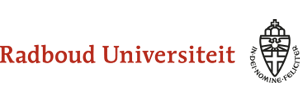American English Phonetics
Another American English Faculty Project
5.5 The mouth
The mouth is the most important part of the speech tract because it is here that the most important modifications of its shape are achieved and that the majority of the articulatory contacts are made. The roof of the mouth is formed by the soft palate, with the uvula (Du: huig) at the extreme end, which can easily be seen with the aid of a mirror. To the front of the soft palate lies the hard palate, or simply palate (Du: (harde) gehemelte): if you curl your tongue up, you can feel the hard palate arching back to where the soft palate begins. Immediately behind the front teeth is the alveolar ridge, which you touch with the tongue when you say dada; then there are the front teeth themselves and the upper lip. Below these parts there are the more active speech organs: the lower lip and the tongue.
The narrow zone immediately behind the tip of the tongue is called the blade. You use it when imitating the sharp, hissing sound of a snake. The part of the tongue opposite the hard palate is called the front, the part opposite the soft palate is called the back, and the part opposite the back wall of the pharynx is called the root.
